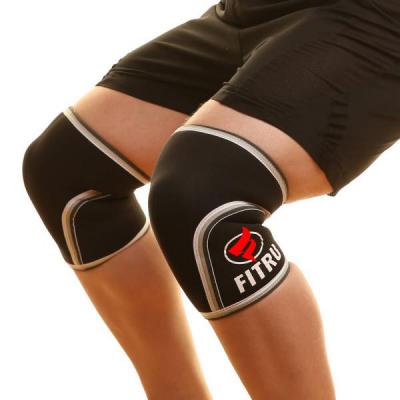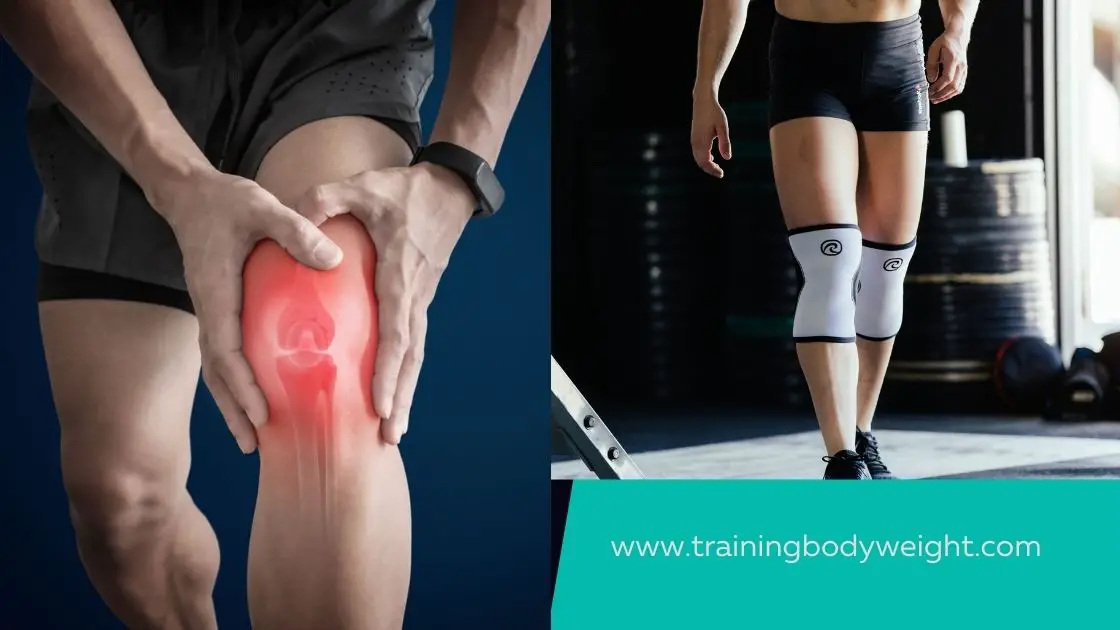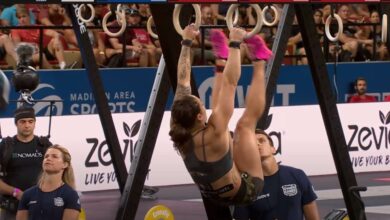Knee injuries are among the common injuries in various exercises. Runners, soccer players also sometimes suffer from them. This article explores CrossFit knee pain, causes, types, and treatment options.
Table of Contents
How does CrossFit Knee Pain Happen?
Knee pain, also called patellofemoral pain syndrome, can affect athletes who are more engaged with continual knee bending. CrossFit knee pain is not an exclusive occurrence. Rather, any athlete who practices extreme knee movement, such as squats, jumping, or running, can suffer knee injuries.
CrossFit’s high-intensity workouts can put a lot of stress on our joints, muscles, and tendons. Knee pain is often the result of overuse, injury, or because it’s not properly stretched out before and after a workout. CrossFit is a strenuous fitness routine that can cause knee pain from abusing joints, muscles, and tendons.
How Do I Know if My CrossFit Knee Pain is Serious?
Symptoms of CrossFit knee pain include: excessive swelling, tenderness, inflammation, pain on the inside of the knee, discomfort while taking a walk or getting up from sitting. CrossFit knee pain manifests similarly to arthritis in some respects. CrossFit can also lead to patellar tendonitis, which is inflammation of the tendon connecting the kneecap to the shinbone.
A study indicates acute changes in the thickness of the patellar and Achilles tendons happen due to intense CrossFit workouts.
If you are experiencing CrossFit knee pain, it is best to stop CrossFit until the pain subsides. See a doctor if the pain does not go away after a few days of rest. We can modify some CrossFit exercises to reduce stress on the knees, such as doing squats with a chair or bench for support. You can also try doing lunges without putting your heel on the ground.
If you experience CrossFit knee pain, stop CrossFit exercises and activities that aggravate the injury. CrossFit knee pain is often caused by overuse and can be treated through icing, resting, and using compression bandages.
CrossFit knee pain accompanied by swelling and redness around the joint, or loss of motion should be evaluated by a doctor immediately. The exercise motto is:
“No pain, No gain!“
While this is correct for making progress in physical abilities, it can lead to injuries too. Oftentimes, athletes in the pick of their activity are too immersed with the exercise to notice injuries or pains. Sometimes an injury pain is mistaken for the pain due to the exercise, so they push further. This is one of the common reasons that they ignore the pain or realize it hours later.
12 Ways to Prevent CrossFit Knee Pain
The following are the ways to protect your knees during CrossFit:
- Stop CrossFit until the pain subsides. If it hurts, don’t do it! It is possible that you are pushing yourself too hard.
- See a doctor if the pain does not go away after a few days of rest.
- CrossFit with a CrossFit coach to make sure you are performing the moves correctly.
- Warm up your muscles before beginning your CrossFit workout. Stretch after your warm-up.
- Develop core strength through crunches or planks.
- CrossFit with good form. An improper movement can lead to injury.
- CrossFit with people who are at your fitness level to prevent injury.
- Do leg extensions and leg curls for stronger legs.
- Condition the muscles around your knees to follow the proper form. Balancing exercises such as lunges and calf raises help with this.
- Make sure your shoes are supportive and fit well. This will also help prevent any injuries.
- Try using a knee sleeve. These are great for protecting your knees and giving them the support they need as you work out!
- Try proprioceptive training to prevent injuries.

Proprioception is a subconscious system that is responsible for balancing the body. It receives signals from different receptors and brings them to the brain or spinal cord. Then it sends proper orders to different parts.
Proprioception training improves our sense of space. When you have a proper proprioception, you are able to move your limbs and body in any direction without losing balance.
Proprioceptive training can be done by standing on an unstable surface, such as a Bosu ball or foam roller. You can also do this type of training by closing your eyes. This will help improve the receptors in the lower limb joints to maintain proper movement.
Self Treatment of CrossFit Knee Injury
1. Minor CrossFit injuries can often be treated at home with minimal intervention.
2. Ice, gentle stretching, and elevation of the painful area are helpful in treating CrossFit knee pain.
3. Crossfit knee injury can also be treated with natural products like arnica – in the form of an herbal tea or cream. Arnica is a common herbal remedy used to treat inflammation and reduce swelling in muscles, joints, and bruises. It is typically applied topically to relieve stiffness, pain, bruising/swelling anywhere on the body that it’s needed.
4. Natural products like turmeric, which have anti-inflammatory properties, may help relieve joint pain. Also, ginger contains chemicals called gingerols, shogaols, and paradols, which have anti-inflammatory effects.
6. Omega-3 fatty acids – These fatty acids have been shown to help reduce inflammation and improve joint function.
7. At the time of the injury, applying ice to the affected area prevents inflammation and reduces pain.
8. Eccentric contractions with TRX are helpful for CrossFit knee rehab.
9. Incorporate some foam rolling into your routine to help take care of those sore knees.
Common CrossFit Knee Injuries
Meniscus Tear
Meniscus tear is a common injury that can occur during CrossFit. The meniscus is a C-shaped piece of cartilage in the knee that helps cushion and stabilize the joint. A tear in the meniscus can cause pain, swelling, and difficulty walking. A meniscus tear can happen due to twisting the knee while squatting.
Treatment for meniscus tear often includes rest, ice, and physical therapy. Surgery may also be necessary in severe cases.
Patellar Tendinitis
Patellar tendinitis, also known as jumper’s knee, is a condition that can occur from too much CrossFit. The patellar tendon is located behind the knee and connects the bottom of the kneecap to the top of your shin. If this tendon becomes inflamed, it can cause pain and swell in the knee joint.
Patellar tendinitis typically gets worse over time if not treated properly. Some common treatments for patellar tendinitis include using a brace to support the tendon and physical therapy. Surgery may also be necessary in severe cases.
Anterior Cruciate Ligament (ACL) Tear
An ACL tear is a serious injury that can occur during CrossFit. The ACL is a ligament in the knee that helps keep the joint stable. A tear in the ACL can cause pain, swelling, and difficulty walking.
A study shows that proprioception training can prevent ACL injuries among athletes.
Posterior Cruciate Ligament (PCL) Tear in CrossFitters
PCL tear is a less common injury that can occur during CrossFit. PCL is a ligament in the knee that helps keep the joint stable.
MCL Tears in CrossFit
MCL is a ligament responsible for side to side stability of the joint. An MCL CrossFit knee injury can occur during the box jump or while pivoting while running. It also happens when the knee is twisted during a lifting exercise or landing from a jump movement. In most cases, MCL knee injuries heal without surgery and with rest and rehabilitation.
How Can I Tell if I Tore My MCL?
You can’t always know for sure if you have torn your MCL. If you are experiencing pain, swelling, and difficulty walking, then the odds are there is a tear in your MCL. You can also take some steps to prevent this injury from happening again by modifying some exercises that put a lot of stress on the knees during CrossFit workouts.
Achilles Tendonitis in CrossFit
Achilles tendonitis is not a CrossFit knee pain, but a condition that can occur from too much CrossFit. The Achilles tendon is located in the back of the ankle and connects the calf muscle to the heel bone. If this tendon becomes inflamed, it can cause pain and swell in the ankle joint.
Achilles tendonitis often gets worse over time if not treated properly. Some common treatments for Achilles tendonitis include using a brace to support the tendon and physical therapy. Surgery may also be necessary in severe cases.
CrossFit Modifications for Knee Injury
1. CrossFit workouts involve high-impact exercises like jumping and running. They can put a lot of stress on your knees and increase your risk for injuries. Try to avoid these exercises if you are prone to knee pain.
2. Squats – Squats are a common CrossFit exercise, but they can also be hard on your knees. If your knees have been hurting after CrossFit workouts, try lessening the depth of your squat to decrease the impact on your knee joints.
3. Jumping – CrossFit is a sport that involves a lot of jumping, and it can be hard on the knees. Try not to jump too high or land from a box with stiff legs.
4. CrossFit workouts involve a lot of twisting and turning movements, which can put a lot of stress on your knees and cause knee pain. Try to avoid doing these types of movements during CrossFit workouts as much as possible.
Further reading: How to recover from Crossfit back injury.
Knee pain caused by CrossFit is a preventable issue. By strengthening your leg muscles and practicing good form, you can keep your knees healthier and happier! CrossFit is an amazing workout routine that provides many benefits, but it’s important to be proactive in preventing any potential injuries. If you have to keep practicing regardless of CrossFit knee pain, try CrossFit bodyweight workout. Hopefully, this article has given you some good tips!





